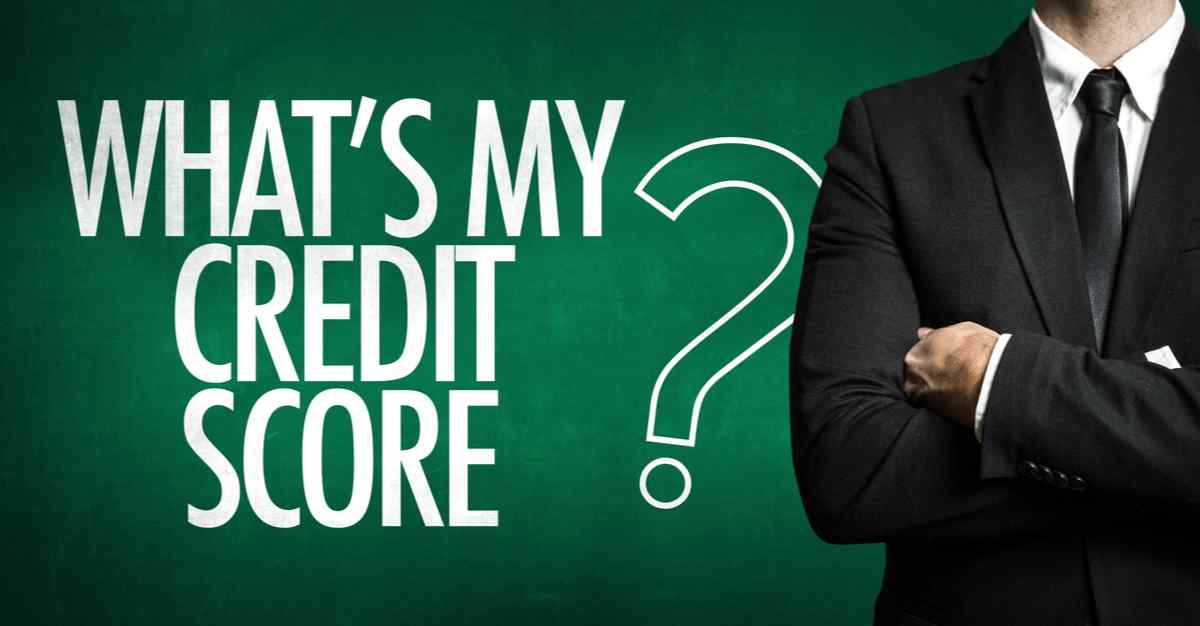VantageScore vs FICO Score
It's never been more challenging for U.S. lenders to make credit decisions. COVID-19 put the economy in a tailspin, and lenders are still unsure how to adjust their risk-assessment models to avoid customers who will default on the loan. Traditionally, lenders would use a consumer's FICO score to determine creditworthiness. However, credit score alone doesn't tell the full story. Someone with a great score may still default during these unprecedented times. That's why more lenders are starting to consider the VantageScore.
What is VantageScore?
Founded in 2006 in partnership between the three credit bureaus Equifax, Experian, and TransUnion, VantageScore is a consumer credit-scoring model. The credit-scoring model is managed by an independent company called VantageScore Solutions, LLC.
Before creating VantageScore, the three credit reporting agencies would use the FICO score model and pay a licensing fee for every credit score that was pulled.
After the initiation of VantageScore, Equifax, Experian, and TransUnion provided their new consumer credit-scoring model to personal finance companies such as Credit Karma, Credit Sesame, and NerdWallet to attract subscribers and compete with FICO.
Since 2015, usage has grown about 20% year over year. Financing companies in auto, banking, credit card, and mortgage may use VantageScore as a part of their risk assessment process.
What is FICO Score?

Founded in 1956, FICO started widely selling its consumer credit-scoring model to lenders in 1989. The company is the creator of the consumer credit-scoring model. FICO makes a profit by licensing credit scoring services to lenders to help them make decisions and lend money quicker.
Over 90% of lenders use a consumer's FICO score to help determine loan eligibility. It is considered the industry standard. FICO is used by the three national credit bureaus, Experian, Equifax, and Transunion. A consumer's FICO score tends to be similar across these three bureaus, but it may vary depending on the information collected by each bureau.
Similarities between VantageScore and FICO Score
VantageScore and FICO scores measure the same thing: the borrower's ability to repay a loan. Both credit score ranges are from 300 to 850; 300 is very poor, and 850 is an excellent credit score. Both companies examine the same things to calculate credit scores:
- Payment history: a history of bad payments will negatively impact both models. They will take into consideration the last late payment's date, different accounts that have registered late fees, and the number of missed payments on an account.
- Length of credit history/credit age: a more extended credit history has a more positive impact on the score because lenders believe that if you were able to demonstrate good habits in the past, then that minimizes risks in the future.
- Types of credit: having both revolving loans such as credit cards and installment loans like mortgages and student loans may help people obtain a good credit score.
- Credit usage/amounts owed: lenders compare the total debt amount and compare it to the available credit. A high credit utilization ratio may have a negative impact on the credit score. It is best to limit the credit usage below 30%.
- Recent credit inquiries/new credit: is the amount of new credit accounts recently opened. More than six credit inquiries in a year are considered too many and will negatively affect the credit score.
Differences Between VantageScore and FICO Score

Both companies consider similar factors when determining a borrower's credit score. However, each company weighs each factor quite differently. Consequently, a borrower's VantageScore range and FICO score could be different.
- One month of credit history is required to calculate the Vantage credit score of a consumer, whereas the FICO score needs at least six months. This makes the VantageScore model more suitable for consumers who are new to credit.
- Another difference between FICO and Vantage is that the FICO score is the most used credit score by lenders as it has been around longer than VantageScore. VantageScore may become more popular with time than the FICO score as lenders become more familiar with it.
- The consumer's credit score can shrink if they have too many hard inquiries. When looking for hard inquiries, VantageScore takes into consideration all types of credit. On the other hand, FICO only counts mortgages, auto loans, and student loans. Also, VantageScore counts multiple credit inquiries within a 14-day range as one, while FICO does the same for a 45 day period.
- When calculating consumer credit scores, VantageScore treats late mortgage payments more severely than any other type of late payment. FICO calculates all late fees similarly.
Numbers to Better Understand the Differences

As mentioned, VantageScore and FICO score use different algorithms to calculate the consumer's credit score. As for the latest versions of both scoring models, borrowers must take into consideration how their credit scores are calculated based on each factor.
- The payment history has a moderate influence on the VantageScore model, making it 40% of the total score. On the other hand, the FICO consumer credit-scoring model is a bit lower, making 35% of the total score.
- The credit usage to accounts owned comparison accounts for 23% of the score for the VantageScore model. For the FICO model, the percentage is slightly higher, composing 30% of the credit score.
- The length of credit history is less influential than some of the other factors for the VantageScore model, making 11% of the score. For the FICO model, this factor weighs a bit more, making up 15% of the score.
- The credit age is considered highly influential for the VantageScore model, making up 21% of the score. This factor weighs less for the FICO model, making up 10% of the score.
- Recent inquiries are less influential for the VantageScore model, adding only 5% of the total credit score. This factor weighs more for the FICO model, counting 10% of the score.
Different Versions of VantageScore and FICO Credit Scores
Every so often, VantageScore and FICO revise their credit score models and update their algorithms. For example, in the newer version of the credit score, the payment history may have less impact on the score, and vice versa. This makes the new score quite different from the older one.
Consequently, not only will a good credit score depend on the model that the lender uses, but from the version of it too. Not all lenders immediately update to a new release, so it is sometimes difficult for the consumer to know what score the lender sees.
How COVID-19 is Affecting VantageScore

The Coronavirus pandemic has led millions of Americans into financial challenges. Missed payments will have a negative impact on the credit score. To help ease their struggles, lenders are offering their borrowers forbearance or deferred payment plans. This allows borrowers to delay or suspend their scheduled loan payments for a specific period to avoid risking their credit scores. The lender decides the period of forbearance or deferred payment plan.
Many customers have witnessed their VantageScores being affected by forbearance or deferred payment plans. Because of this, VantageScore is adjusting its algorithm to minimize any harm connected to forbearance and deferment plans.
If a borrower is affected by COVID-19 and makes a late payment, they have the option to ask the lender to mention in their credit that they were "affected by a natural or declared disaster." Upon reading this code, VantageScore will consider the matter and dismiss any late payment.
On the other hand, FICO does not consider any codes and will calculate the credit score as usual.
VantageScore is More Consumer-Friendly

Like the recipe for Coke, the math behind a consumer's FICO score is a closely guarded secret. In contrast, VantageScore strives to be more transparent, providing the end-user with the reasons behind their score. Each score is presented with a two-digit or text-based reason code.
Many lenders, lending partners, and Banks will provide consumers with their VantageScore for free. Companies that provide this service include NerdWallet, SavvyMoney, WalletHub, Upturn, CreditKarma, Chase, U.S. Bank, Capital One, and CreditSesame. A VantageScore report will include the reason code.
Learn About Your VantageScore at ReasonCode.org
The consumer can learn more about their VantageScore by going to ReasonCode.org. Once there, they can type their reason code into the site and get an explanation of what their score means.
For instance, the VantageScore may be presented with the number "32" and a brief explanation, such as, "No bankcard accounts with a valid credit amount," or, "Oldest bankcard was opened too recently." While these explanations may seem self-explanatory at first glance, some consumers may be left wondering what they can do to fix the issue.
At ReasonCode.org, VantageScore tries to give the consumer the information they need to fix the issues keeping them from having the highest score.
A consumer may see that their VantageScore is low because the balance on their account is high compared to credit limits. If they typed the corresponding reason code into ReasonCode.org, they would see a battle plan to help fix the issue: they should pay down the balances on their accounts. Another consumer may see their recently opened account is hurting them. The advice here would be to not open more accounts than necessary. Their score may improve as their accounts get older.
This level of transparency is useful for the consumer. Since it is not available from FICO, it makes VantageScore a more useful score for the consumer.
What's New in VantageScore 4.0
Both FICO and VantageScore use predictive modeling to determine lending risk. As explained earlier, these models evolve over time. Here are the biggest improvements in the fourth generation of VantageScore:
- The model scores 40 million more consumers than the previous version, thanks partly to scoring dormant credit profiles. It has a special way to score consumers who have not borrowed recently, instead of giving them a lower score just because they haven't accessed credit in a while.
- The model looks at credit behavior over a longer period of time.
- The model is built around the National Consumer Assistance Plan, meaning that information like tax liens, civil judgments, and some medical collection information is not considered.
VantageScore is the first to factor in the National Consumer Assistance Plan. This helps give a more accurate representation of creditworthiness. For instance, by waiting for 180-days to include medical debt on a credit report, VantageScore is able to avoid listing debt that will eventually be paid by the consumer's insurance company.
Do Lenders Choose One or the Other?

Comparing these two credit-scoring products may give a false impression that lenders use one or the other to make credit decisions. Instead, lenders are more likely to use FICO and VantageScore together than to just use VantageScore. While lenders are likely to see a predictive lift from incorporating better-suited models into their risk assessment process, they are unlikely to stop using the older ones.
Similarly, millions of consumers check both scores to understand their creditworthiness.
Consumers Can Use MyFICO.com to Learn More About Their FICO Score
Pitting VantageScore vs FICO is not a fair fight. FICO is the software used for calculating a person's credit score. MyFICO.com is a service that provides the consumer with their score and resources for improving their score. This is more similar to VantageScore. However, MyFICO.com requires payment from the consumer.
It is important for any consumer to understand their credit score. Unfortunately, that's not as easy as looking up just one number. Lenders often use several models to determine creditworthiness. The consumer should try to see what the lender sees. That means looking up their FICO scores across all three national bureaus. They should also look up their VantageScore. These scores will all be different, and the consumer should understand why and what they can do to get the best rates possible.





